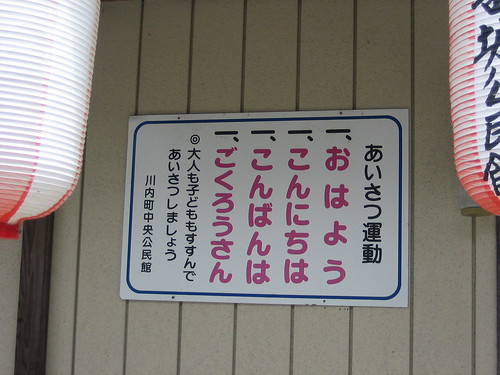First I hear a rumor that Nova is going belly up, and then I hear more specific but still pretty dramatic details that they’re closing a high percentage of stores while being behind on salary payments. Are they really done for? Are the years of labor code violations and shady business practices finally paying off? What will thousands of unemployed and untrained foreign teachers do?
[Update] Asahi is reporting some specific information, and since it’s in Japanese I’ll provide the gist of it here:
- The General Union, largely composed of foreign teachers in Japan, has sent a letter of warning to the Nova CEO.
- They demand Nova to end their practice of late pay to their employees.
- They also demand that Nova return the deposits of students who have properly cancelled their contracts.
- Nova is “studying” a plan to close 200 of their 900 schools; the union wants this the closings to be arranged with adequate time for both staff and students to make proper arrangements.
More information is available at the General Union web page, but for the time being most of it is in Japanese, and since I’ve got several hour of paid translation work to do tonight, I won’t be doing any more here today. Anyone with information they would like to share is welcome to comment below.
Oh, and this is the letter the union sent to Nova CEO Sahashi.
2007年9月20日
株式会社 ノ ヴ ァ
取締役社長 猿橋 望 様
ゼネラルユニオン
委員長 山原克二警 告 書
1-遅配の賃金を即刻、完全に支給すること。二度と、遅配を繰り返さないこと。
2-解約手続きが終了しているレッスン料を、即刻、生徒さんに返金すること。
「解約済であるが、返金ができていない」場合、貴社はそのむね、クレジット会社に通報し、生徒さんへの不当な返済請求を、直ちに停止させる事」3-全国各地で、突然の一斉閉校の動きが拡大しているが、これについては、慎重に対処するとともに、十分な予告期間を設け、生徒さん、及び、教職員に被害が及ばぬよう、納得できるコンセンサスをはかること。
以上
And to clarify my initial snide comment, while I do enjoy seeing a despicably shady and exploitative company go under (hence the Shadenfreude tag on the post), I don’t actually enjoy seeing hundreds or thousands of innocent employees and students being screwed over.



